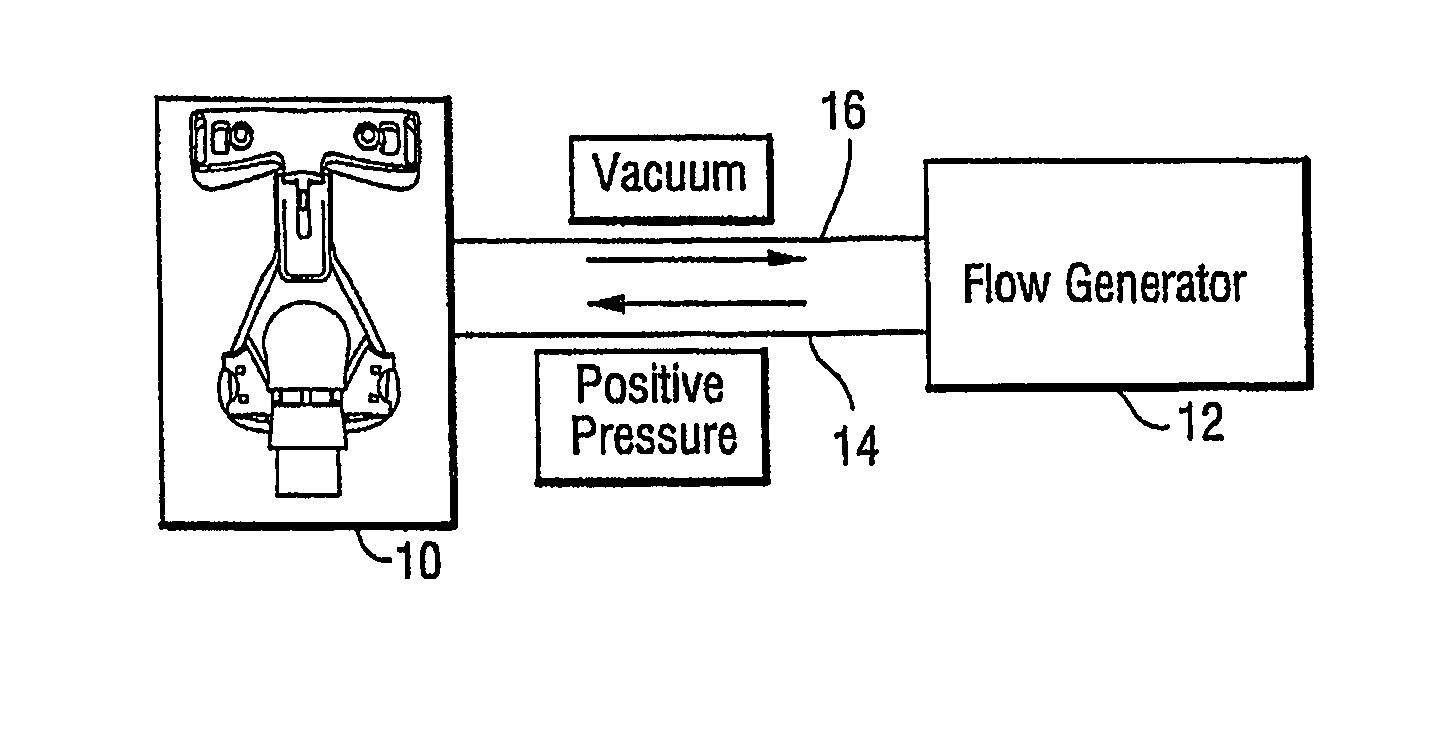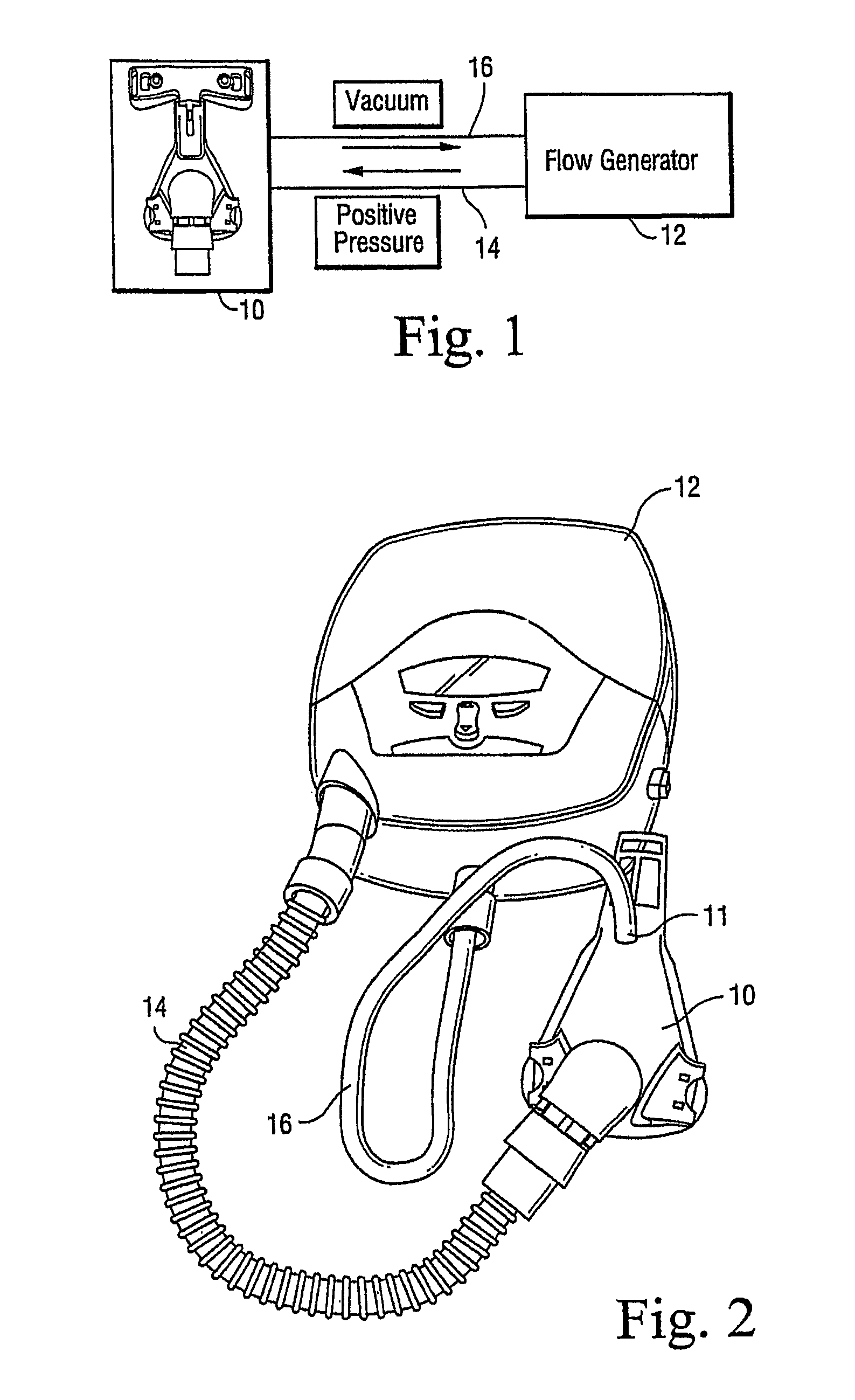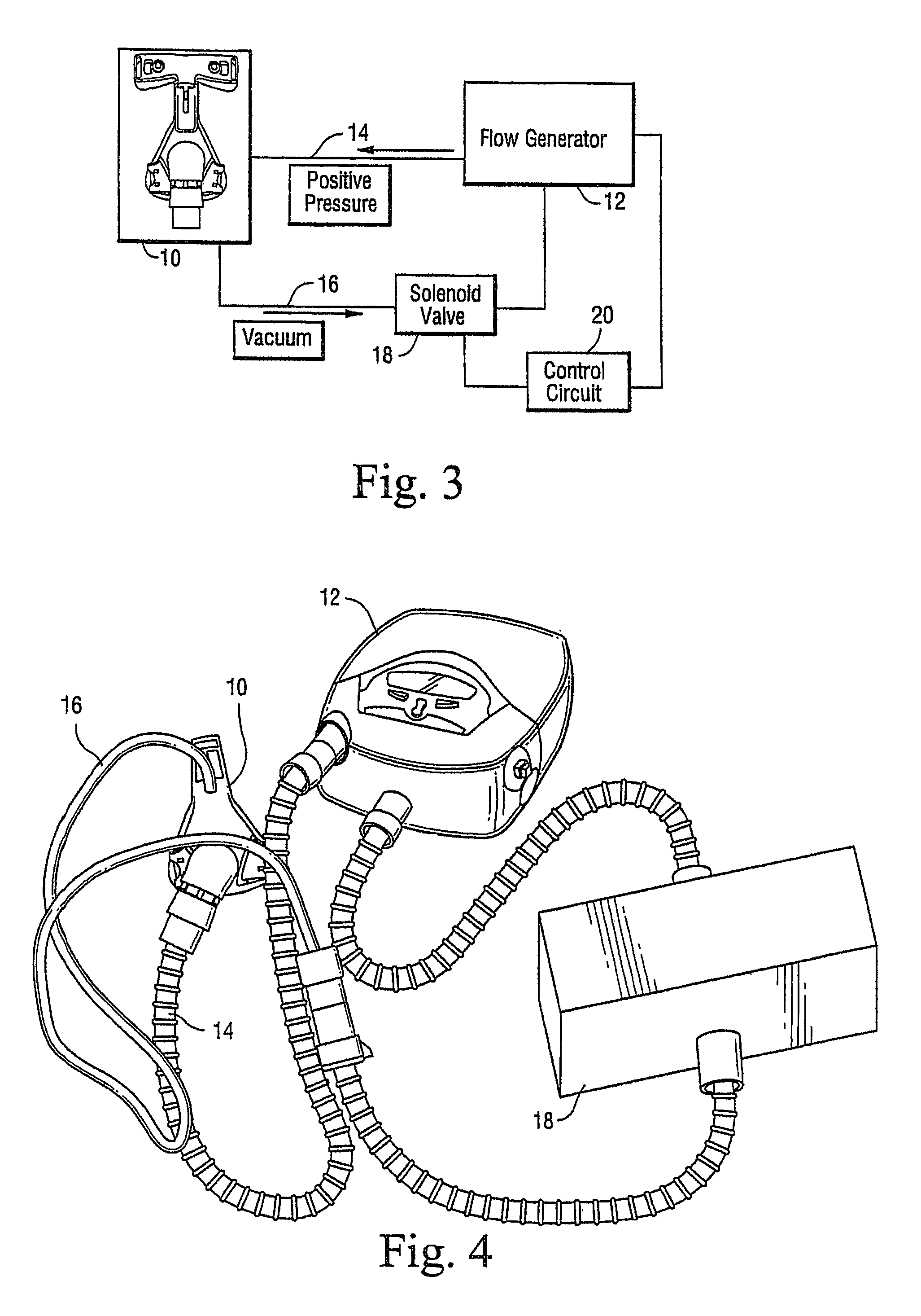Ventless mask CPAP system
a mask and cpap technology, applied in the direction of valves, respirators, mechanical equipment, etc., can solve the problems of increasing the flow of the vent, increasing the impedance of the mask vent, and constantly proving to be a complex design issue, etc., to reduce the impedance, increase the pressure differential over current methods, and increase the pressure differential
- Summary
- Abstract
- Description
- Claims
- Application Information
AI Technical Summary
Benefits of technology
Problems solved by technology
Method used
Image
Examples
Embodiment Construction
[0070]Preferred or exemplary embodiments of the invention will be described in reference to FIGS. 1-15. Initially, only a general description of the components for preferred embodiments will be described, and this will be followed with a further description of features, advantages and other options.
[0071]Aspects of the air delivery methods or systems described below may be incorporated into other systems such as those described in U.S. Patent Application No. 60 / 775,334, entitled Mask Pressure Regulation in CPAP Treatment and Assisted Respiration by Dynamic Control of Mask Vent Flow and filed Feb. 22, 2006 the entirety incorporated herein by reference.
[0072]FIG. 1 shows an assembly according to a first embodiment of the present invention. The assembly includes a mask 10 in the form of a full face mask, although nasal mask, nasal cannula, prongs, nozzles or puffs are also within the scope of the present invention. Mask 10 is in communication with the flow generator 12 via a positive p...
PUM
 Login to View More
Login to View More Abstract
Description
Claims
Application Information
 Login to View More
Login to View More - R&D
- Intellectual Property
- Life Sciences
- Materials
- Tech Scout
- Unparalleled Data Quality
- Higher Quality Content
- 60% Fewer Hallucinations
Browse by: Latest US Patents, China's latest patents, Technical Efficacy Thesaurus, Application Domain, Technology Topic, Popular Technical Reports.
© 2025 PatSnap. All rights reserved.Legal|Privacy policy|Modern Slavery Act Transparency Statement|Sitemap|About US| Contact US: help@patsnap.com



